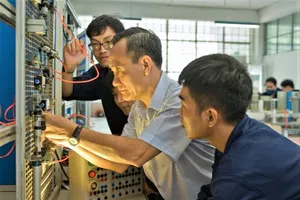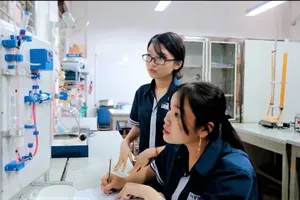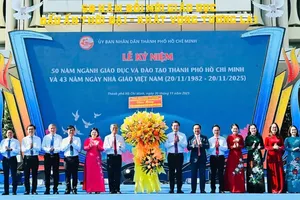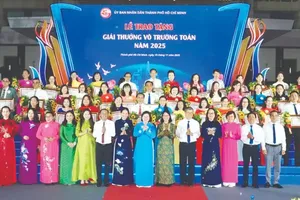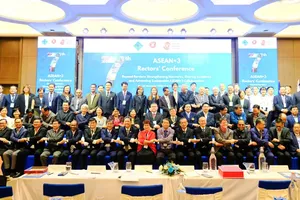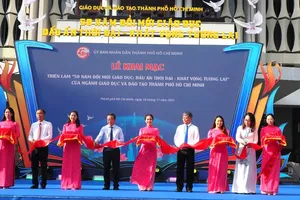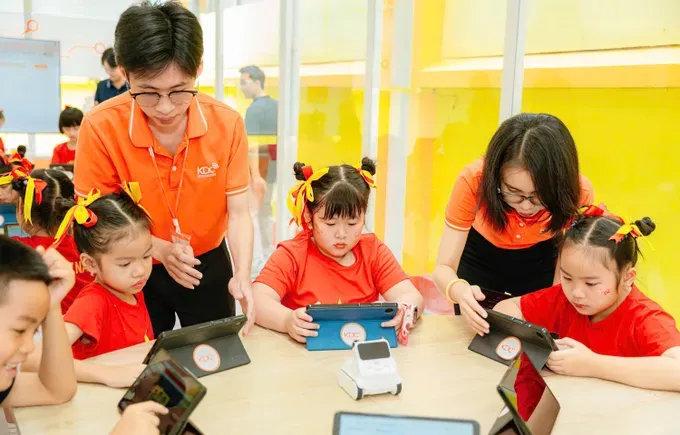
As one of the pioneers in Vietnam’s educational innovation space, KDI Education has reportedly spent years partnering with high schools to roll out STEM and digital citizen skills programs. It was this on-the-ground implementation, according to the company, that led them to a key realization: the requirement for digital transformation and IT application can’t possibly succeed if it relies solely on the education program itself.
Armed with that insight, KDI Education has forged comprehensive partnerships with educational institutions to embed technology more deeply and achieve tangible, substantive results. In 2024, the enterprise coordinated with HCMC University of Science (under Vietnam National University-HCMC) to organize training on generative AI for high school teachers.
Furthermore, an “AI Hackathon” competition themed “Protecting the Green Planet”, co-organized by KDI Education and the HCMC Department of Science and Technology, served as a large-scale AI playground for HCMC’s high school students. The aim, they said, was to help students access modern AI technology, thereby developing their thinking and application skills to create practical solutions.
Deputy General Director Nguyen Viet Trung of KDI Education put it this way: “These AI training programs and competitions are all about elevating the experience for teachers and students in STEM and AI. It’s our way of helping to realize the strategic vision for Vietnam’s education sector in the digital age, a vision of helping students fully develop their skills, knowledge, creative thinking, and capacity for global integration.”
According to Permanent Deputy Minister of Science and Technology Vu Hai Quan, only when the “three-house” linkage model – the State, the school, and the enterprise – can “jointly create, cooperate, and share” will a new development space for the education and training sector emerge.
This, he argued, is what creates the fast and sustainable growth momentum, which rests on the pillars of talent, science-technology, innovation, and digital transformation. In this model, he explained, the State plays the role of “facilitator.” The school acts as the “center for training, scientific research, and innovation,” while the enterprise serves as the “place for practice, the source for skill demands, and a co-investor in the training process itself.”
General Director Nguyen Phuong Lan of EMG Education Group shared a similar view. Given that the facilities at many public schools are still limited, she believes the “State and the people working together” policy is the right direction, as it maximizes all available resources to bring the best educational results to students.
“However,” she cautioned, “enterprises need a legal corridor that is complete, clear, public, and transparent, one that is expressed through formal legal documents. This creates a fair ‘playing field’ for all units to participate and minimizes situations involving group interests or unfair competition.”
HCMC Department of Education and Training Director Nguyen Van Hieu echoed these sentiments. He affirmed that the policy of “mobilizing social resources for education” has so far been a crucial component of the city’s investment, development, and quality-improvement policies. It’s essential, he said, to promote and effectively leverage all societal resources, including organizations, businesses, partners, and philanthropists.
But he had a key qualifier. “Contribution shouldn’t just be in the single form of money,” he stressed. “It can be done through many other methods, like contributing wisdom, experience, human resources, or sponsoring teaching equipment.”
Vice President Tran Cao Vinh of Vietnam National University - HCMC (VNU-HCM) reported that the university has just signed a series of “deep cooperation” agreements with dozens of tech corporations, both domestic and international. This cooperation, he said, has already funneled hundreds of billions of VND (tens of millions of USD) into VNU-HCMC.
The funds are reportedly earmarked for developing high-quality human resources through training, internships, coaching, and recruitment programs; promoting R&D and technology transfer; and applying digital transformation in corporate governance and production. It also focuses on innovation and startups, developing sustainable ecosystems, and enhancing the role of enterprises in educational, environmental, and community initiatives.
A standout example is VNU-HCM’s Center for AI Education and Training. Established in 2021 with a hefty sponsorship of over VND32 billion (US$1.26 million) from Inter-Pacific Group (IPPG), it’s the first center of its kind in southern Vietnam to run programs on AI, robot technology, and AI solutions.
The center implements an AI education curriculum that is quality-appraised by a council of reputable experts. It’s also a critical component of a national project, directed by VNU-HCM, that aims to build a comprehensive AI education ecosystem. Along with providing a knowledge foundation about AI for K-12 and university students, the center also organizes free seminars and talks for anyone in the community interested in science and technology.




